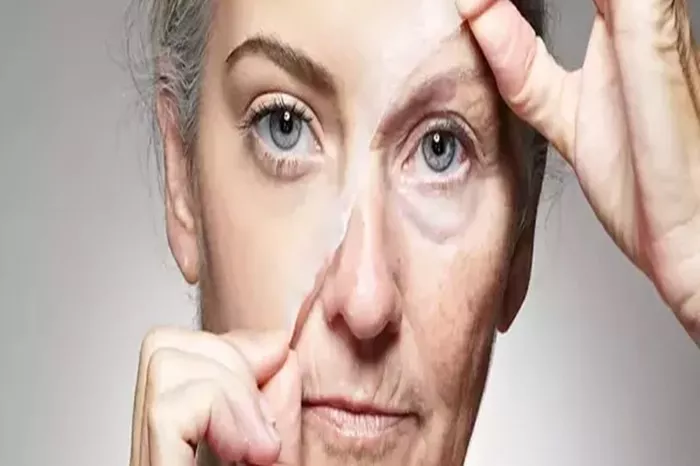Wrinkles, those fine lines etched on our skin, are an inevitable part of aging. While some embrace them as a mark of wisdom and experience, others seek ways to delay their appearance or reduce their prominence. Understanding the factors that contribute to wrinkles is crucial for anyone interested in maintaining youthful skin. By comprehending these influences, individuals can make informed choices about their skincare routines, lifestyles, and preventive measures.
1.Sun Exposure and Ultraviolet (UV) Radiation
Among the primary culprits behind premature skin aging and wrinkles is prolonged exposure to the sun’s UV rays. UV radiation damages the skin’s connective tissues, namely collagen and elastin, which are responsible for its firmness and elasticity. As these proteins degrade, the skin loses its ability to bounce back, leading to sagging and the formation of wrinkles. This process, known as photoaging, is characterized by fine lines, deep wrinkles, and uneven pigmentation.
UVB rays primarily affect the outermost layers of the skin, causing sunburns and contributing to the formation of superficial wrinkles. On the other hand, UVA rays penetrate deeper into the dermis, accelerating collagen breakdown and promoting the development of more pronounced wrinkles over time. The cumulative effects of UV exposure are significant, making consistent sun protection a cornerstone of wrinkle prevention. Broad-spectrum sunscreen, protective clothing, and seeking shade during peak sun hours are essential strategies for mitigating UV damage and preserving youthful skin.
2.Smoking and Tobacco Use
The detrimental effects of smoking extend beyond respiratory health to include profound impacts on skin aging. Tobacco smoke contains thousands of chemicals, many of which are known to accelerate skin aging processes. Nicotine, in particular, constricts blood vessels, reducing blood flow to the skin and impairing its ability to receive essential nutrients and oxygen. This diminished circulation deprives the skin of its natural radiance and elasticity, contributing to the formation of wrinkles, especially around the mouth (smoker’s lines) and eyes.
Moreover, smoking triggers oxidative stress within the body, leading to the production of free radicals that attack healthy cells, including those responsible for maintaining skin structure. Over time, this oxidative damage weakens collagen and elastin fibers, hastening the onset of wrinkles and fine lines. Quitting smoking not only improves overall health but also offers significant benefits for preserving skin youthfulness and minimizing premature aging.
3.Facial Expressions and Repetitive Movements
The habitual use of facial muscles through repetitive expressions and movements plays a pivotal role in the development of dynamic wrinkles. These wrinkles typically appear in areas where facial muscles contract during emotional expressions, such as frowning, squinting, or smiling. Over time, the skin loses its ability to snap back into place after these movements, resulting in the formation of permanent lines and creases.
Common areas prone to dynamic wrinkles include the forehead (horizontal lines), between the eyebrows (frown lines or “11” lines), and around the eyes (crow’s feet). While facial expressions are a natural part of communication and emotional expression, minimizing excessive squinting or furrowing of the brow can help reduce the severity of these wrinkles. Techniques such as botulinum toxin injections (e.g., Botox) can temporarily relax specific facial muscles, softening existing wrinkles and preventing further deepening of lines caused by repetitive movements.
See also: 6 Home Remedies To Reduce Wrinkles Under Eyes
4.Poor Skincare Habits and Hydration
Effective skincare practices are essential for maintaining skin health and delaying the onset of wrinkles. Neglecting proper hydration, cleansing, and moisturizing routines can compromise the skin’s barrier function, leaving it more susceptible to damage and accelerated aging. Inadequate hydration can lead to dryness, flakiness, and a loss of elasticity, exacerbating the appearance of fine lines and wrinkles.
A consistent skincare regimen tailored to individual skin types and concerns is critical for preserving skin integrity and promoting resilience against environmental stressors. This includes using gentle cleansers to remove impurities without stripping natural oils, applying moisturizers enriched with antioxidants and humectants to lock in moisture, and incorporating serums or treatments targeted at specific aging concerns, such as collagen production or cellular turnover.
Additionally, sunscreen should be considered a non-negotiable step in daily skincare routines, regardless of weather conditions or indoor activities. UV protection shields the skin from harmful rays that can accelerate premature aging and contribute to the development of wrinkles over time. Regular use of sunscreen with a broad-spectrum SPF of 30 or higher helps safeguard against UV-induced damage and preserves youthful skin appearance.
5.Genetics and Intrinsic Aging
While external factors such as sun exposure and lifestyle choices significantly influence the development of wrinkles, genetics also play a crucial role in determining how and when aging signs manifest in individual skin. Intrinsic aging, also known as chronological aging, refers to the natural aging process governed by genetic factors and biological changes that occur over time. As we age, the skin undergoes structural changes, including a gradual decline in collagen and elastin production, decreased moisture retention, and a slower rate of cell turnover.
Genetic predispositions can dictate the initial thickness, elasticity, and overall resilience of the skin, influencing its susceptibility to environmental damage and the development of wrinkles. While genetic factors are not entirely within our control, adopting healthy lifestyle habits, maintaining a balanced diet rich in antioxidants and essential nutrients, and adhering to a comprehensive skincare regimen can mitigate some of the effects of intrinsic aging.
Conclusion
The quest for youthful skin involves a multifaceted approach that addresses both intrinsic and extrinsic factors contributing to wrinkle formation. By understanding the impact of sun exposure, lifestyle choices, facial expressions, skincare practices, and genetic predispositions, individuals can proactively adopt preventive measures and targeted interventions to maintain skin health and minimize the visible signs of aging. Empowered with knowledge and informed choices, individuals can embark on a skincare journey that promotes long-term skin vitality and youthful radiance.
Related topics:
Top 6 Ways To Remove Neck Lines
Top 5 Home Remedies To Get Rid Of Crow’s Feet
5 Non-surgical Treatments For Face Wrinkles


